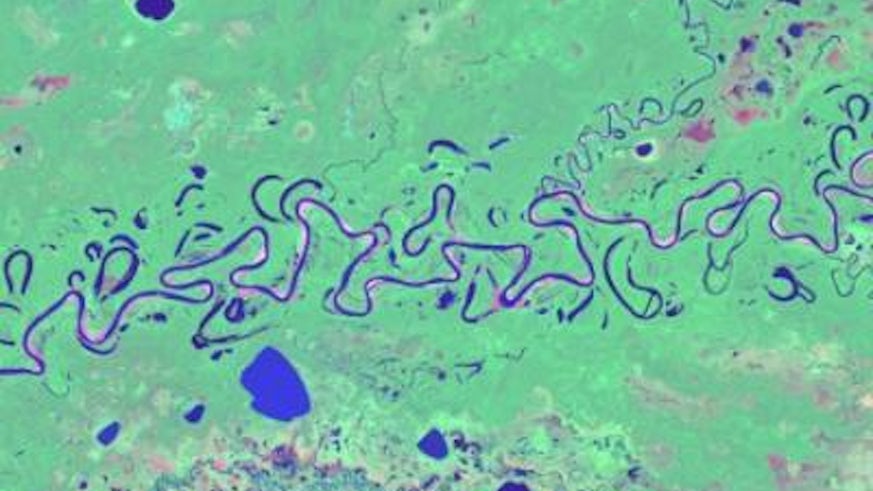Sediment supply drives floodplain evolution in Amazon Basin
3 Tachwedd 2014

A new study of the Amazon River basin shows lowland rivers that carry large volumes of sediment meander more across floodplains and create more oxbow lakes than rivers that carry less sediment.
The findings have implications for the Amazonian river system, which may be significantly altered by proposed mega-dams that would disrupt sediment supplies. Researchers from Cardiff University's School of Earth and Environmental Sciences examined 20 reaches within the Amazon Basin from Landsat imagery spanning nearly 30 years (1985 to 2013).
They found rivers transporting larger amounts of sediment migrated more, and noted that channel movement did not depend on either the slope of the channel or the river discharge.
The research gives scientists insight into the contrasting behavioural properties of rivers where sediment is an imposed variable – e.g. resulting from glacial, volcanic, or human activity – and rivers where the main sediment supply is from local bank erosion.
Dr José Constantine, Lecturer in Earth Sciences at Cardiff University's School of Earth & Ocean Sciences and lead author of the paper said: "We found that the speed at which the meanders migrated for each of the rivers studied depended on the river's supply of sand and silt. The meanders of rivers carrying more sediment migrated faster than those carrying less sediment, and were also more frequently cut off and abandoned to form U-shaped lakes. If sediment loads are reduced — by a dam, for example — meander migration is expected to slow, and thus the reshaping of the floodplain environment is affected."